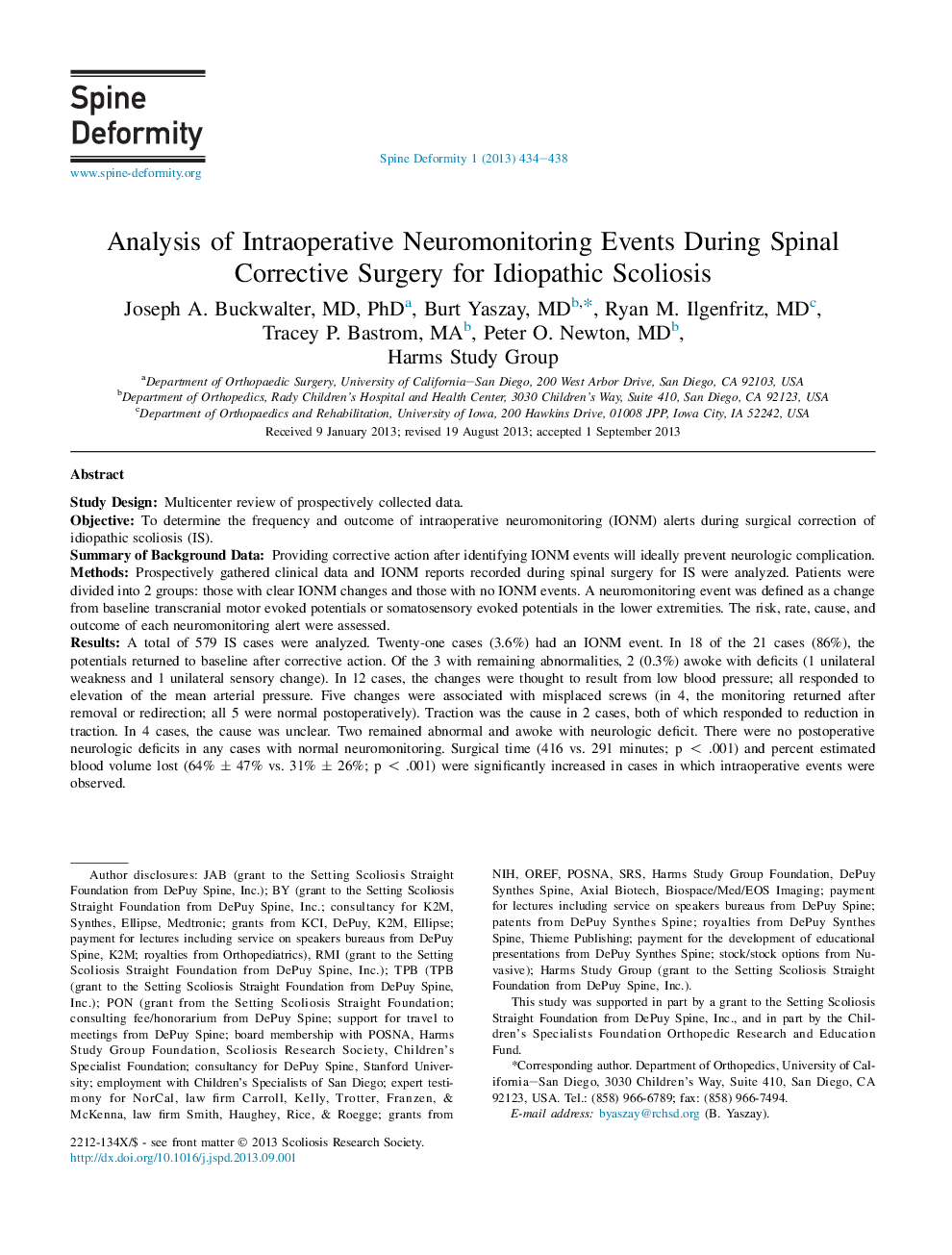| Article ID | Journal | Published Year | Pages | File Type |
|---|---|---|---|---|
| 4095460 | Spine Deformity | 2013 | 5 Pages |
Study DesignMulticenter review of prospectively collected data.ObjectiveTo determine the frequency and outcome of intraoperative neuromonitoring (IONM) alerts during surgical correction of idiopathic scoliosis (IS).Summary of Background DataProviding corrective action after identifying IONM events will ideally prevent neurologic complication.MethodsProspectively gathered clinical data and IONM reports recorded during spinal surgery for IS were analyzed. Patients were divided into 2 groups: those with clear IONM changes and those with no IONM events. A neuromonitoring event was defined as a change from baseline transcranial motor evoked potentials or somatosensory evoked potentials in the lower extremities. The risk, rate, cause, and outcome of each neuromonitoring alert were assessed.ResultsA total of 579 IS cases were analyzed. Twenty-one cases (3.6%) had an IONM event. In 18 of the 21 cases (86%), the potentials returned to baseline after corrective action. Of the 3 with remaining abnormalities, 2 (0.3%) awoke with deficits (1 unilateral weakness and 1 unilateral sensory change). In 12 cases, the changes were thought to result from low blood pressure; all responded to elevation of the mean arterial pressure. Five changes were associated with misplaced screws (in 4, the monitoring returned after removal or redirection; all 5 were normal postoperatively). Traction was the cause in 2 cases, both of which responded to reduction in traction. In 4 cases, the cause was unclear. Two remained abnormal and awoke with neurologic deficit. There were no postoperative neurologic deficits in any cases with normal neuromonitoring. Surgical time (416 vs. 291 minutes; p < .001) and percent estimated blood volume lost (64% ± 47% vs. 31% ± 26%; p < .001) were significantly increased in cases in which intraoperative events were observed.ConclusionsThe rate of neuromonitoring changes was 3.6% when using both transcranial motor evoked potential and somatosensory evoked potential monitoring. When a cause was identified and corrective action was taken, there were no postoperative neurologic deficits.
